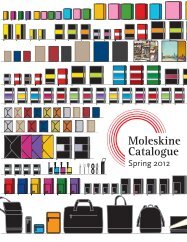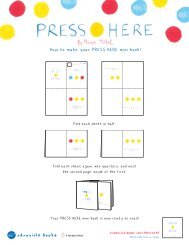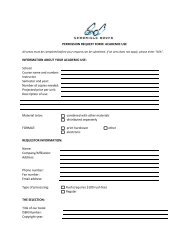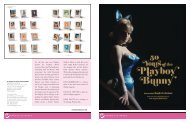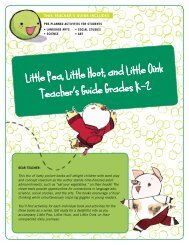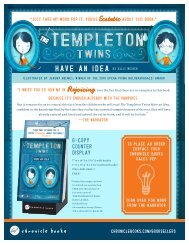voting is power! - Chronicle Books
voting is power! - Chronicle Books
voting is power! - Chronicle Books
Create successful ePaper yourself
Turn your PDF publications into a flip-book with our unique Google optimized e-Paper software.
★★★★★★★★★★★ ★★★★MAKE THE ELECTIONCONNECTION★★★★★★★★★★★ ★★★★★ ★VOTINGISPOWER!★★★★★REGISTER TO VOTE HERE ★★★★From the bookElection Connection:The Official Nick Guide to Electing the President$7.95 PB • ISBN 0-8118-4175-885 Second Street, San Franc<strong>is</strong>co, CA 94105, www.chroniclekids.com© Viacom International Inc. All rights reserved. Nickelodeon, Rugrats, Nickelodeon Rocket Power, The Wild Thornberrys, SpongeBob SquarePants, Hey Arnold, The Adventures of Jimmy Neutron: Boy Genius, Fairly OddParents, and all related charactersare trademarks of Viacom International Inc. Rugrats, Rocket Power, and The Wild Thornberrys created by Klasky Csupo, Inc. SpongeBob SquarePants created by Stephen Hillenburg. Hey Arnold created by Craig Bartlett. Fairly OddParents created by Butch Hartman.
MAKE THE ELECTION CONNECTION IN YOUR CLASSROOM!Bring the electoral process to life for your students by staging a presidentialelection. Th<strong>is</strong> hands-on classroom kit encourages students to think both criticallyand creatively as they write, draw, debate, evaluate, persuade, and make choices.Let’s get started!Reg<strong>is</strong>ter to voteHang th<strong>is</strong> poster in your classroom, and have eachstudent reg<strong>is</strong>ter to vote by signing h<strong>is</strong> or her namein one of the boxes. Remind students that no one canvote unless he or she <strong>is</strong> reg<strong>is</strong>tered!Form TeamsDivide the class into 3 to 5 groups.Media Team: One group will be the media team.They will be in charge of monitoring and reportingthe election. The media team will• Create a newspaper, magazine, telev<strong>is</strong>ion showor website to document the election process.• Organize and host the debates.Sample debate questions are included on the studentpages. Encourage the class to create their own questions.Campaign Speeches: Right before the election, haveeach political party deliver a campaign speech to allvoters. One member of each party should deliver the speech.The ElectionCreate a ballot box or <strong>voting</strong> both (an old refrigeratorbox makes a great <strong>voting</strong> booth!). Each student whohas reg<strong>is</strong>tered can vote. For greater interest, stageboth a popular and electoral vote, and then comparethe results of the two.Popular Vote: Each student writes h<strong>is</strong> choice forpresident on a slip of paper and deposits it in aballot box.Political Parties: Two to four other groups (dependingon the size of your class) will form political parties.These teams will be responsible for selecting candidatesand running the campaigns.• Create slogans, posters, ads, banners, bumperstickers, etc.• Write speeches.• Participate in a debate.The CampaignEncourage students in each group to think criticallyabout the candidate they’ve chosen. (How can theyuse their candidate’s character traits to best advantage?How can their opponent’s character traits beused against him or her? How does theircandidate’s personality affect the party platform?What makes their character the bestcandidate?)Electoral Vote: Refer to the map of the U.S. onpages 60–61 of the Election Connection. On separatepieces of paper write each state and its numberof electoral votes, and place in a container. Eachstudent draws a state from the box, and <strong>is</strong> giventhat many votes for h<strong>is</strong> choice.Be a Voting BuddyOkay, your students are too young to vote for real.But you can encourage them to help someone elsevote! Do they know a grown-up who hasn’t reg<strong>is</strong>teredto vote yet? Encourage that person to reg<strong>is</strong>ter.Let’s Party! Celebrate the election with cupcakes,balloons, confetti and more. For party and craftideas, go towww.chroniclebooks.com/nickelodeon/The Debates: Host debates to allowstudents to compare the candidates’strengths and weaknesses. Choose 2to 4 students from each political partyto represent their candidate in the debates.
THE GREAT DEBATENow that the candidates have been selected and the campaigns are underway, it’stime to let the political parties show their stuff.Political Parties: Choose 2 to 4 members of your party to be the debate team and answer questions for your candidate.Media Team: Prepare a l<strong>is</strong>t of questions to ask the candidates. Here’s a l<strong>is</strong>t of questions to get you started,but you might want to add more of your own. You can even create questions based on <strong>is</strong>sues relating to yourschool. After the debate, you will tally the votes and declare a winner.Voters: The rest of the students in the political parties are the voters.Watch and evaluate the debates, using the information below.The DebatesEach voter writes down a question for the debate team. The questions are put into a debate box. What aresome pressing <strong>is</strong>sues in your school or community? Be creative! Here are a few ideas just to get you started.You can use these, and make up your own, too.Should wheels (skateboards, scooters, etc.) be allowed on school grounds?Can the cafeteria food be improved, and if so, how can th<strong>is</strong> be done?Should candy and other sweet treats be allowed in school?What <strong>is</strong> your advice to kids who are embarrassed to be seen with their parents?How often should students receive homework? And should homework be assigned during vacations?Should grown-ups be required to take classes?Why do you think it’s important for us to vote?What new clubs or organizations would you like to see at the school or in the community?Who would you pick as your running mate and why?Have voters take turns pulling one question at a time from the debate box and read it out loud to a debateteam. Those on the team d<strong>is</strong>cuss how their candidate would answer the question. Then a spokesperson foreach team answers the question out loud to the rest of the class.RATE THE DEBATECreate a chart to rate the candidates. How did your candidate do? Does your candidatehave some weak areas that need brushing up? What were some key <strong>is</strong>suesyour candidate said that might end up in your newspaper or on telev<strong>is</strong>ion? Youcan use the categories below for your chart or create your own! The whole classcan participate.Candidate’s name / Were they prepared? / Did they make eye contact? / Good choice of language? / Did theyactually answer the questions? / Did they resort to name calling and other no-nos?Judge each candidate’s sincerity, organization, eye contact, language, and how well they answered the questions.Rate each category: 1 = I’d rather l<strong>is</strong>ten to a dent<strong>is</strong>t’s drill / 2 = Wake me up when it’s over / 3 = Now I’ml<strong>is</strong>tening / 4 = Got my vote!Take away one point each time a candidate used name calling or negative words toward another candidate.Tally the votes. Who do you think won the debates? Report it on TV and in your newsletter.


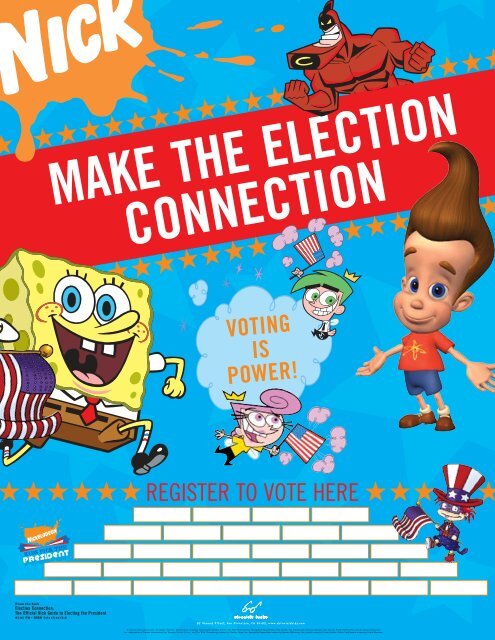
![I'm a Survivor! [pdf] - Chronicle Books](https://img.yumpu.com/48815452/1/185x260/im-a-survivor-pdf-chronicle-books.jpg?quality=85)


